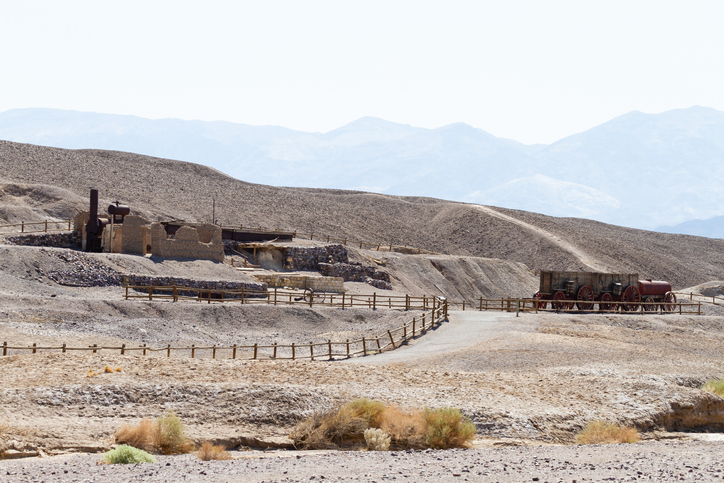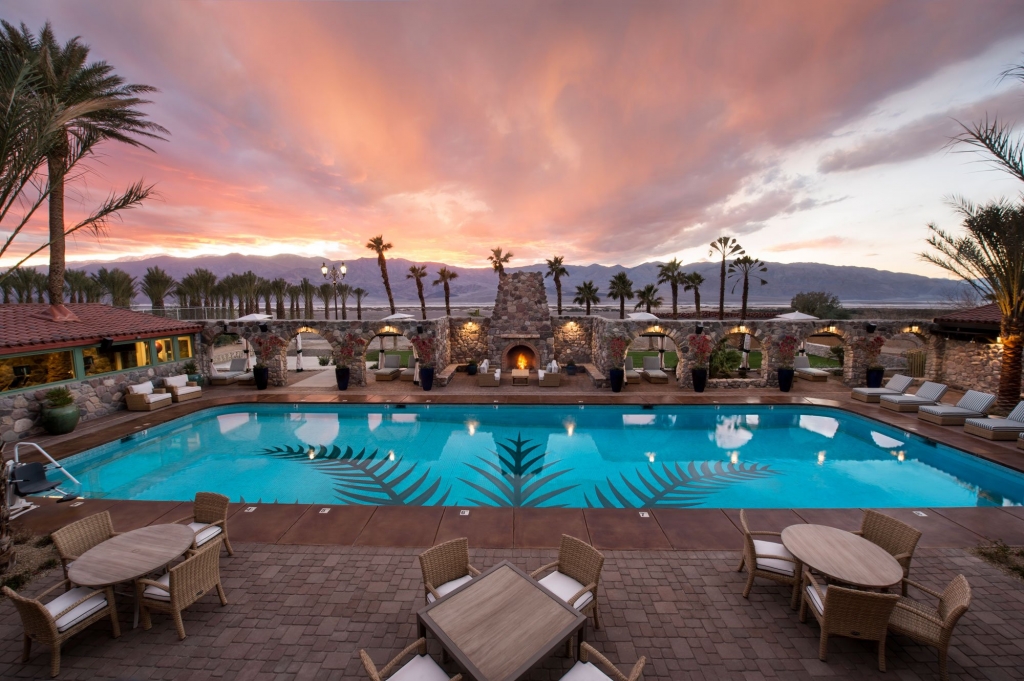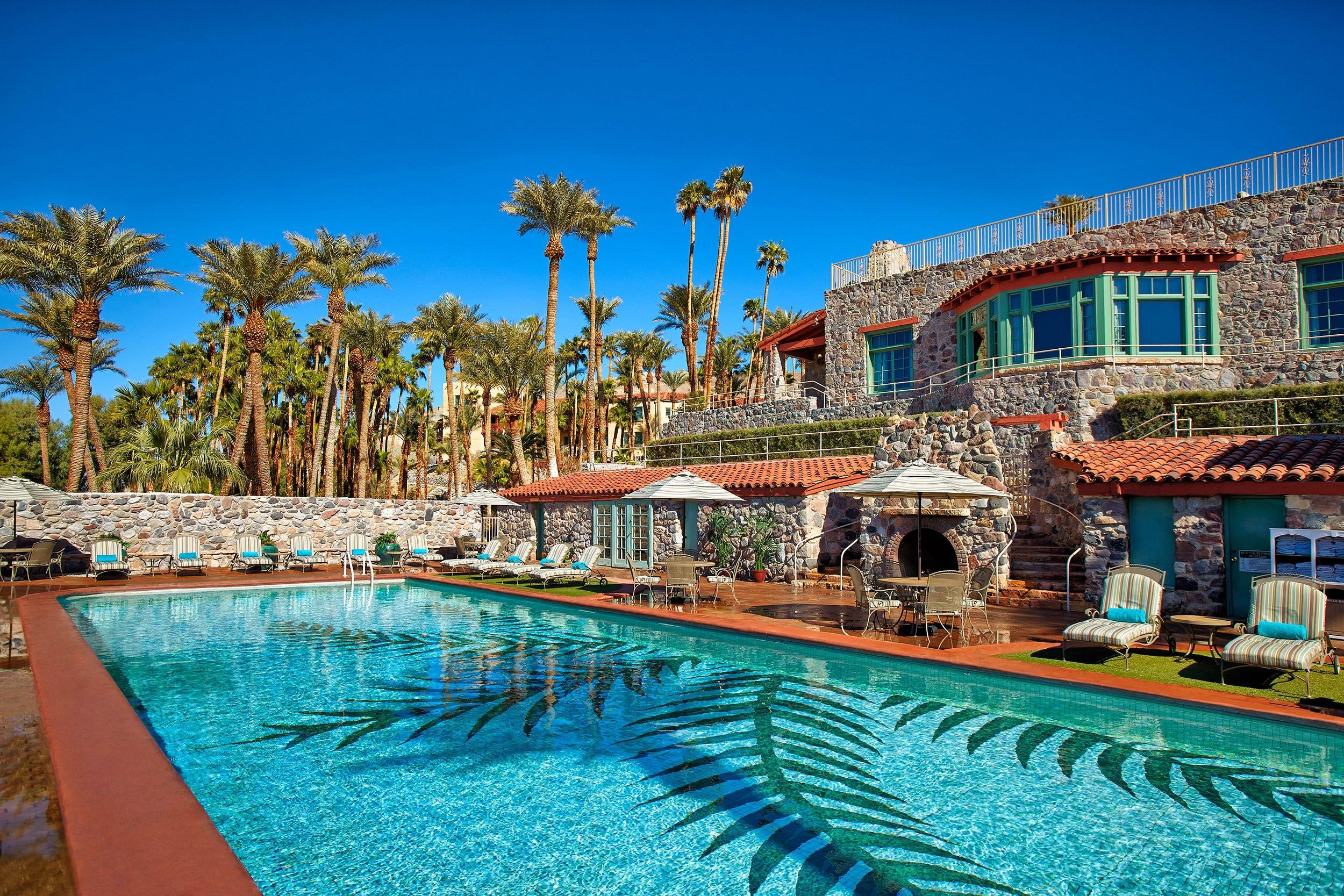As the resort is re-born for the 21st century, we look at its colorful history, including Ford Model A’s, a mining railroad, and borax
Considering its location, The Inn at Death Valley may just be the most surprising luxury hotel in the world.
When it opened in 1927, there was no air conditioning. Los Angeles, the closest major city, was 290 miles away and automobiles were as uncomfortable as they were unreliable, especially on the bumpy roads that worked their way into the valley. And while the name Death Valley had a certain foreboding mystique, it hardly whispered of exotic romance and midnight at the oasis.
A hotel in Death Valley? Talk about the business plan from hell.But the Pacific Coast Borax Co., builders of what was originally called the Furnace Creek Inn, were a bit desperate. The company operated the narrow-gauge Death Valley Railroad to service its mines in the area, that is, until the mining industry began to fade way. What do you do with a railroad in the middle of nowhere?

A Counterintuitive Allure
But just as modern-day tourists, especially Europeans, love to come here in the middle of summer to experience the hottest place on Earth at its very hottest, the intimidating-sounding Death Valley held a certain counterintuitive allure for early travelers. Many of them were also looking for adventures in their brand new Ford Model A’s, a car that debuted in 1927.
So the borax company hired Albert C. Martin, Sr., a prominent Los Angeles architect, who in 1918 had designed that city’s famous Million Dollar Theater and would later serve as one of the three lead architects for Los Angeles City Hall. Martin had an enviable site to work with as he began to plan a hotel for a low rise at Furnace Creek Wash, where the commanding views stretched across the valley to the Panamint Range.
The budget was $30,000, equal to about $400,000 today. That wasn’t a whole lot of money with which to work, especially considering Death Valley’s remote location and the potentially challenging building conditions. Even so, the original estimate was enough to cause Pacific Borax’s parent company to balk at the price, at least initially, before finally green-lighting the project.

Mission Style, Native Stone, and Adobe Bricks
Martin’s design called for a Mission-style structure, built of native stone and adobe bricks, and topped by a red-tile roof. Construction began in November 1926. Local Shoshone and Paiute Indians mixed the adobe and produced the bricks, and, remarkably, the inn’s 12 rooms opened just a few months later on Feb. 1, 1927. Price? Ten bucks per room, single occupancy, with meals included.
At the suggestion of legendary National Park Service officials Stephen T. Mather and Horace Albright, Beulah Brown, the manager of Yellowstone’s Old Faithful Inn, was hired to run the inn. Brown brought her Yellowstone staff, all of whom were otherwise idle in winter, with a plan to return north to the Old Faithful Inn during summer when Furnace Creek Inn would close because of the oppressive heat.
Furnace Creek Inn was an immediate hit and a new era began in Death Valley as promoters touted the transformation of the area “from gruesome death-dealing desert to health-giving winter resort,” according to Richard E. Lingenfelter in his history Death Valley & The Amargosa: A Land of Illusion.
Starting in 1930, many of these visitors were inspired to make the journey after listening to the popular Death Valley Days radio show (sponsored by Pacific Borax), which for 14 years celebrated the lore and legends of the area. To accommodate the new wave of tourists, a good number of whom arrived in their own autos rather than by train (the railroad eventually closed in 1930), the inn quickly expanded.
By 1928, the hotel added the 20-room Terrace Wing, then built another 20 rooms, according to Lingenfelter. The famous spring-fed, 70-foot-long swimming pool opened in 1929, and the inn grew to 77 rooms, before 11 were eliminated to accommodate the 1935 expansion of the lobby, dining room, and kitchen.
Now, as work nears completion on the most significant improvements in many decades at the property, including the addition of 11 two-room casitas and enhancements to the restaurant and lobby, the inn is poised to enter a whole new phase in its evolution. But even as you enjoy the kinds of comforts you would expect from a contemporary luxury hotel, the inn connects you to a more rough-and-ready time in Death Valley history.
How to Explore
The Oasis at Death Valley in Furnace Creek (formerly the Furnace Creek Resort) is situated in a lush oasis surrounded by the vast and arid desert of Death Valley National Park — just 120 miles northwest of Las Vegas and 275 miles northeast of Los Angeles. The resort encompasses two hotels — the historic AAA Four Diamond, 66-room Inn at Death Valley and the family-oriented, 224-room Ranch at Death Valley. The entire resort is undergoing a complete renaissance with an extensive renovation to be completed in the spring of 2018. The resort includes natural spring-fed pools, an 18-hole golf course, horse and carriage rides, world-renowned stargazing, and is surrounded by Death Valley National Park’s main attractions. For information and reservations, visit oasisatdeathvalley.com or call 800-236-7916.
For more travel experiences to Beautiful Places on Earth™ available from Xanterra Travel Collection® and its affiliated properties, visit xanterra.com/explore.


